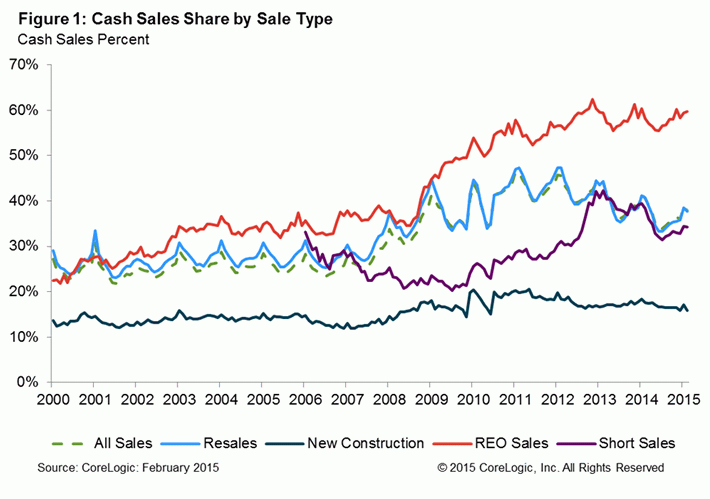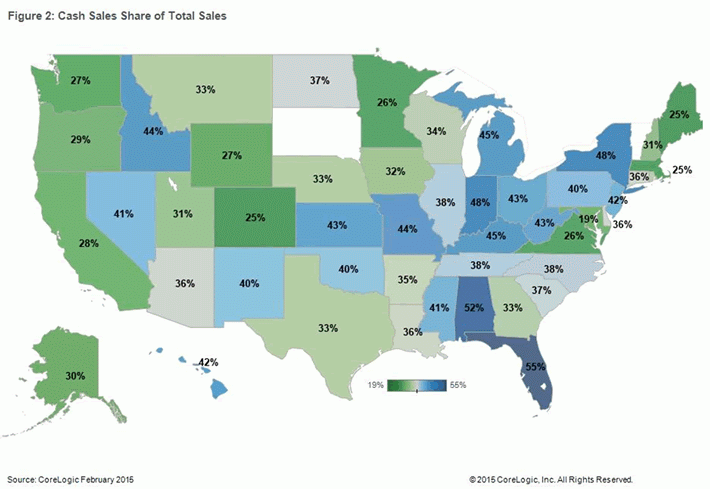The influence of cash sales on the residential real estate market continued to decline in February with those sales accounting for 37.9 percent of total home sales. This is still a significant number, before the housing crisis such sales typically made up a quarter of sales, but the percentage has fallen consistently on an annual basis for 26 straight months from its 46.5 percent January 2011 peak.
The February figures reported by CoreLogic were down 2.7 percentage points from a year earlier and were 1 point lower than cash sales in January. CoreLogic says due to the seasonality of the housing market comparisons should be made on an annual rather than a monthly basis. The company projects that, at the current rate of decline, the cash sales share will return to the pre-crisis level of 25 percent by mid-2018.

Cash continues to be a major factor in sales of real estate-owned (REO) properties at 59.8 percent but those sales themselves are shrinking, down to 9.7 percent in February, so have a dwindling effect on the overall market. Cash accounted for 37.6 percent of resales, 34.3 percent of short sales, and 15.8 percent of newly constructed home sales.

More than half of home sales in Florida (54.6 percent) and Alabama (51.9 percent) were all cash. Other states where cash sales continued to be elevated included New York (48.4 percent), Indiana (47.8 percent) and Michigan (44.9 percent). Of the nation's largest 100 Core Based Statistical Areas (CBSAs) measured by population, Detroit had the highest share of cash sales at 60.5 percent, followed by Cape Coral-Fort Myers, Fla. (59.4 percent), Miami-Miami Beach (59.3 percent), Fort Lauderdale (58.5 percent) and West Palm Beach-Boca Raton (58.4 percent). The Washington D.C. metro area had the lowest cash sales share at 16.9 percent.







